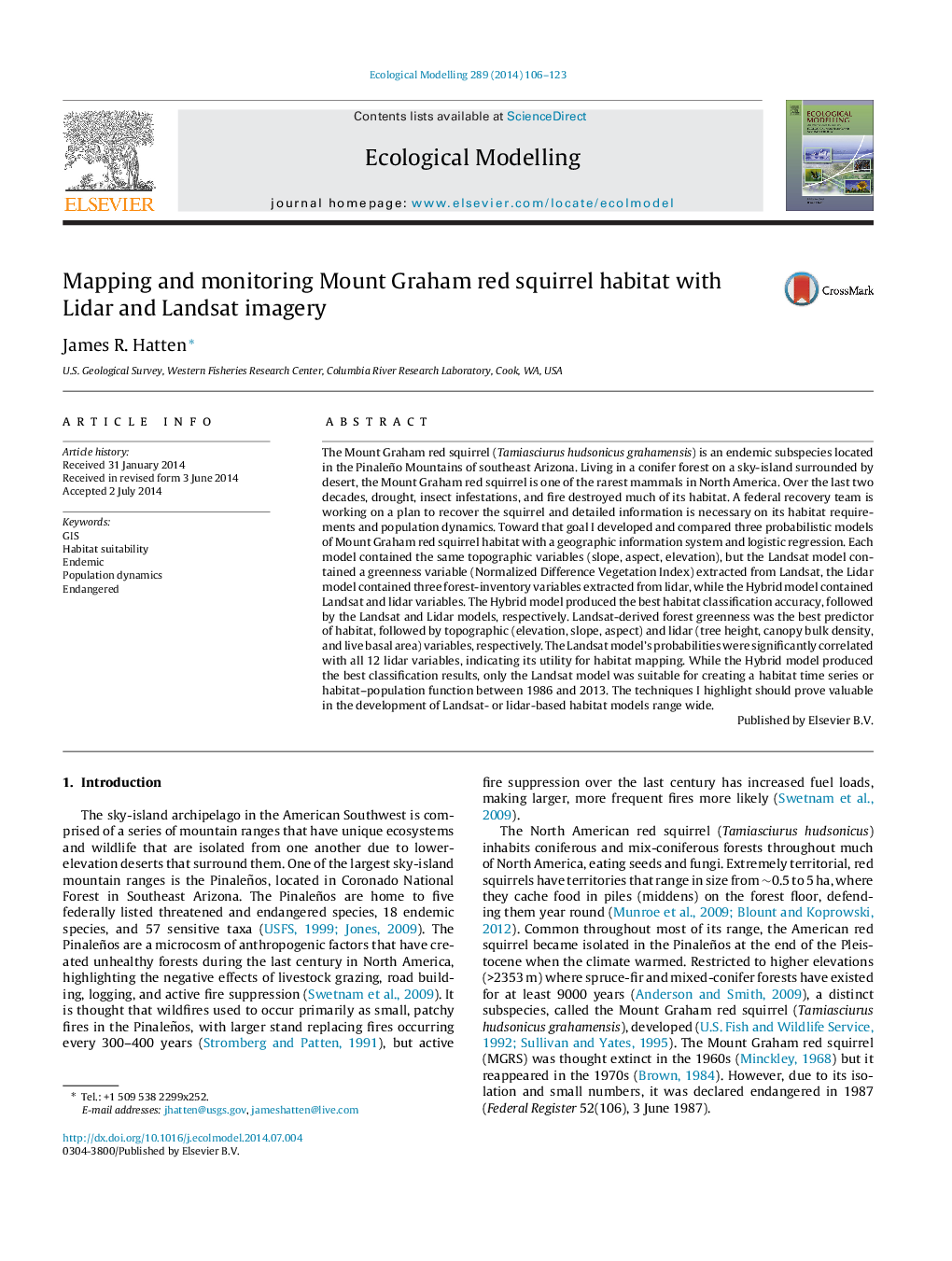| کد مقاله | کد نشریه | سال انتشار | مقاله انگلیسی | نسخه تمام متن |
|---|---|---|---|---|
| 6296826 | 1617457 | 2014 | 18 صفحه PDF | دانلود رایگان |
عنوان انگلیسی مقاله ISI
Mapping and monitoring Mount Graham red squirrel habitat with Lidar and Landsat imagery
ترجمه فارسی عنوان
نقشه برداری و نظارت زیستگاه سرخ گراهام قرمز با تصاویر لیادار و لندست
دانلود مقاله + سفارش ترجمه
دانلود مقاله ISI انگلیسی
رایگان برای ایرانیان
کلمات کلیدی
موضوعات مرتبط
علوم زیستی و بیوفناوری
علوم کشاورزی و بیولوژیک
بوم شناسی، تکامل، رفتار و سامانه شناسی
چکیده انگلیسی
The Mount Graham red squirrel (Tamiasciurus hudsonicus grahamensis) is an endemic subspecies located in the Pinaleño Mountains of southeast Arizona. Living in a conifer forest on a sky-island surrounded by desert, the Mount Graham red squirrel is one of the rarest mammals in North America. Over the last two decades, drought, insect infestations, and fire destroyed much of its habitat. A federal recovery team is working on a plan to recover the squirrel and detailed information is necessary on its habitat requirements and population dynamics. Toward that goal I developed and compared three probabilistic models of Mount Graham red squirrel habitat with a geographic information system and logistic regression. Each model contained the same topographic variables (slope, aspect, elevation), but the Landsat model contained a greenness variable (Normalized Difference Vegetation Index) extracted from Landsat, the Lidar model contained three forest-inventory variables extracted from lidar, while the Hybrid model contained Landsat and lidar variables. The Hybrid model produced the best habitat classification accuracy, followed by the Landsat and Lidar models, respectively. Landsat-derived forest greenness was the best predictor of habitat, followed by topographic (elevation, slope, aspect) and lidar (tree height, canopy bulk density, and live basal area) variables, respectively. The Landsat model's probabilities were significantly correlated with all 12 lidar variables, indicating its utility for habitat mapping. While the Hybrid model produced the best classification results, only the Landsat model was suitable for creating a habitat time series or habitat-population function between 1986 and 2013. The techniques I highlight should prove valuable in the development of Landsat- or lidar-based habitat models range wide.
ناشر
Database: Elsevier - ScienceDirect (ساینس دایرکت)
Journal: Ecological Modelling - Volume 289, 10 October 2014, Pages 106-123
Journal: Ecological Modelling - Volume 289, 10 October 2014, Pages 106-123
نویسندگان
James R. Hatten,
